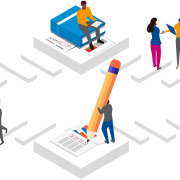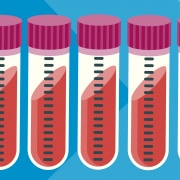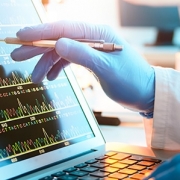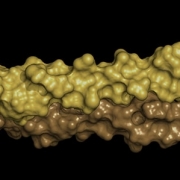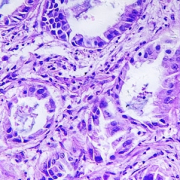The 100,000 Genomes Project – sorting fact from fiction
As the first patients are set to be recruited to the main study this month: what are the truths and myths about this Project?
In 2012, prime minister David Cameron announced that the government had allocated £100m to deliver the sequencing of 100,000 genomes from patients with rare diseases or common cancers. The 100,000 Genomes Project aims to increase diagnostic yield through accurate clinical data collection, to provide data for collaborative projects between the commercial sector and the NHS, and to drive the development of personalised medicine, leaving a legacy for the NHS.
The Project will be challenging not least because of the variability of our genomes. We know from sequencing just the protein-coding regions of the genome that each of us has approximately 30,000 variants. So what are the truths and myths about the Project?
1) Is this a research project?
The 100,000 Genomes Project is more than just research; patients in whom diagnostic genetic variants are identified receive these results. Patient DNA will be extracted by accredited laboratories, and part of each sample will be sent for Biorepository quality checks, and DNA sequencing by a non-NHS facility. Any key findings generated following the detailed bioinformatics analysis will be confirmed in the NHS labs using the retained DNA sample. That said, research is also an integral part of the Project. The knowledge gained will help us enhance our understanding of the genetic and molecular basis of diseases and how they can be treated.
2) Will everyone be guaranteed a clinically actionable result?
Whole genome sequencing (WGS) has great potential, but we are still in the early stages of its clinical use, and a definitive result cannot be guaranteed for various reasons. Firstly, the sensitivity of WGS is not 100%, so a mutation could be missed. Secondly, we still don’t know the role of many human genes, so the clinical significance of alterations in their sequence may require additional research. Thirdly, even in well characterised genes, variants of unknown significance will be identified; these will be passed to the new Genomics England Clinical Interpretation Partnerships (GeCIPs) for investigation. Finally, alterations in the sequence of DNA are not the only way in which genetic disorders arise – for example, chemical modifications not detected by WGS can play a part.
3) ‘The what IFs’ – the problem of incidental findings
It is inevitable that WGS will not only generate pertinent findings, but also identify some potentially harmful changes in genes unrelated to the patient’s current condition, so-called unsolicited or incidental findings (IFs). The incidence of IFs identified by WGS was initially thought to be between 1.2 and 1.5% but others now estimate this to be higher.
The Project has defined two levels of IFs. The first are ‘additional looked-for’ findings in relation to a selection of known genetic variations of high clinical significance. Variants in ten specific genes, such as those associated with familial breast cancer and familial hypercholesterolemia, will be actively investigated, since their presence can influence clinical care. Patients will be able to consent to receive feedback about additional looked-for findings, or opt out if they prefer; ethical approval has been granted for this aspect of the study. A second group of IFs will not be actively sought, but may be identified during the analysis. These will need careful discussion and evaluation but will not generally be fed back. Clinical geneticists have experience of how to deal with such IFs and will assist other clinicians.
4) Will the Project sequence the genomes of 100,000 individuals?
No. The Project will sequence 100,000 genomes. For the rare disease group, genomes of the patient and two close relatives (ideally both parents) will be sequenced, and for cancer patients, genomes from both their tumour cells and normal blood cells will be sequenced. This allows the background ’noise‘ of natural variation between genomes to be excluded, so that variation linked to the patient’s disorder can be more readily pinpointed.
5) Will this study replace existing testing?
No. Patients will have to have undergone ’standard’ genetic testing prior to WGS. Some conditions can be readily diagnosed by simple routine tests, and there is no point in using an expensive and more time consuming test like WGS. If normal results are obtained in routine testing, a patient can be referred to the Project by a clinician within one of the Genome Medicine Centres (GMCs).
6) Can any patient with a rare disease or cancer be included?
Not at this stage. Patients with one of 100+ rare disorders and six common cancers will be included at the outset, but as the Project progresses further conditions are likely to be added.
7) What is the time scale for results?
Initially results will take some time to be fed back to patients – probably around six months. However, it is envisaged that speed will increase during the lifetime of the study to clinically actionable turnaround times (30 days) by the end.
8) Can patients be identified?
This a complicated question! Patients will be pseudonymised at the GMCs. The patient samples forwarded to the Biorepository and on to the sequencing centre will be identified by a participant ID. Participant information will however include patient specific information from the GMC providing their care. These data will be transferred from the GMC to Genomics England Data Centre via the NHS N3 network, and all data will be held within the NHS firewall. Data will not leave the Genomics England Data Centre. NHS clinicians will have access to data on patients in their care. Researchers can access and analyse relevant de-identified data within a secure environment once they have receive approval
We are at an exciting stage of this complex project. The first patients with rare diseases are set to be recruited to the main study this month, and cancer patients by July. The first few patients from the project pilots have already received results enabling more effective treatment and family follow up, though. Watch this space!
–



